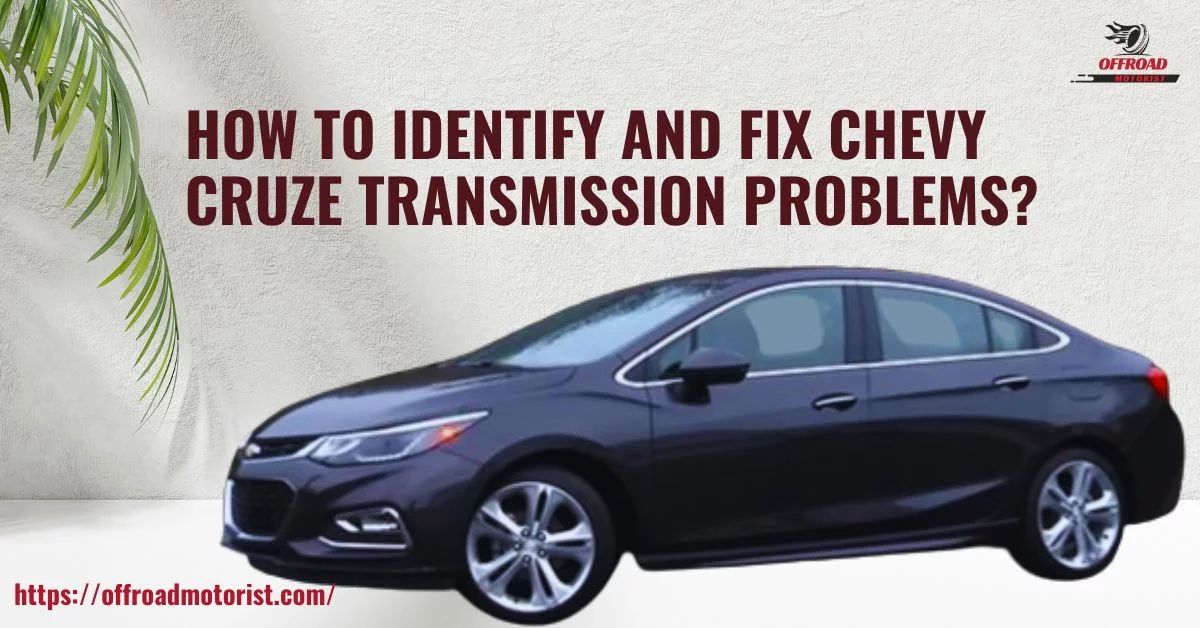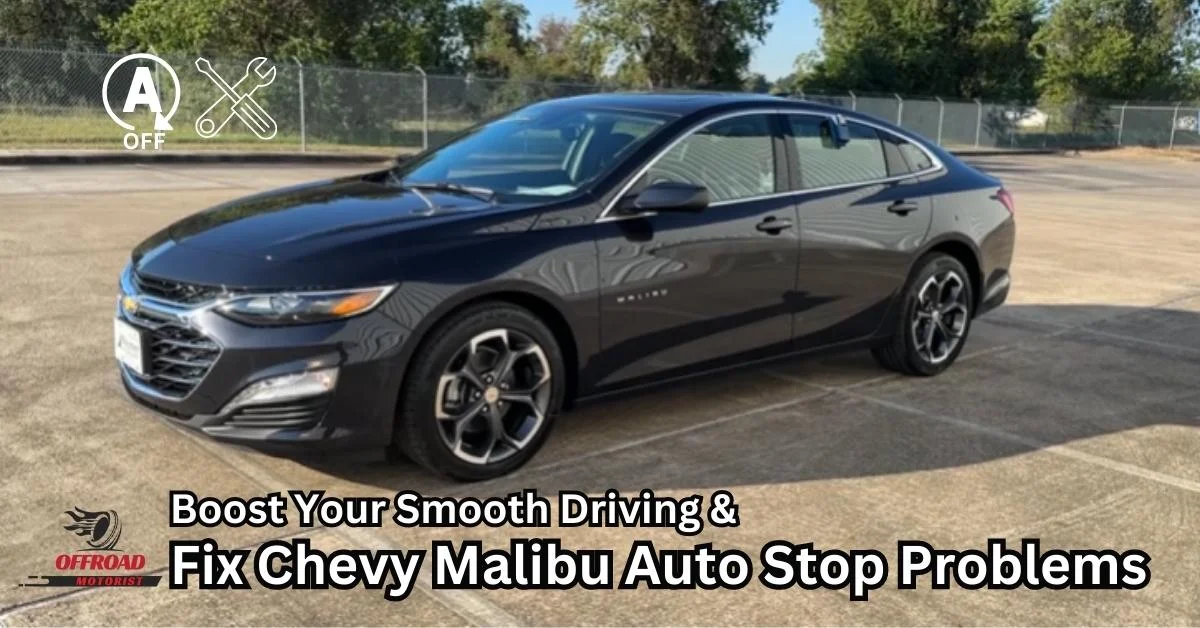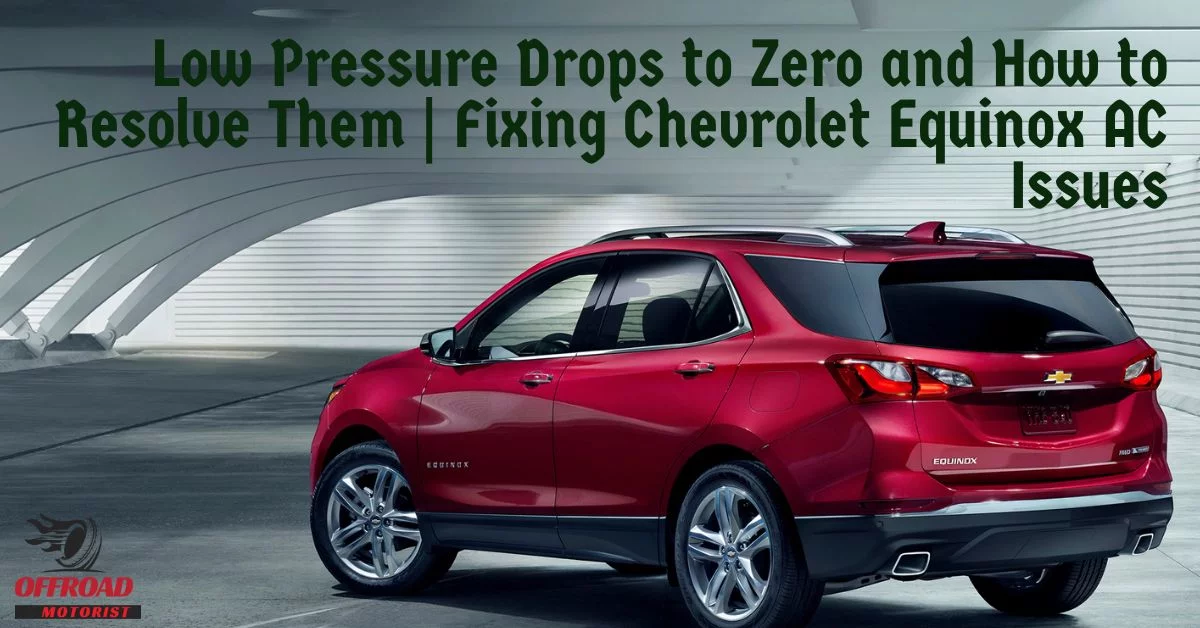Cruise Control Not Working Chevy Silverado| A Complete Guide to Usage & Troubleshooting
Cruise control is essential for long drives, providing drivers with an effortless way to maintain a consistent speed without constantly adjusting the accelerator pedal.
However, cruise control malfunctions in your Chevy Silverado can lead to frustration and inconvenience.
In this comprehensive guide, we will delve into the ins and outs of cruise control, from understanding its functionality to using and troubleshooting it in your Chevy Silverado.
Let’s embark on a journey to unravel the mysteries of cruise control and keep your Chevy Silverado running smoothly by solving issues if cruise control not working Chevy Silverado.
Cruise Control
Cruise control is a valuable feature that enhances driver comfort and improves fuel efficiency. By understanding what cruise control is, how to use it, and its benefits, you can make the most of this technology during your next road trip.
01. What is Cruise Control?
Cruise control is an advanced driver-assistance system that enables a vehicle to maintain a constant speed without requiring the driver to press the accelerator pedal continuously.
By automatically adjusting the throttle, cruise control allows drivers to maintain a steady speed, reducing driver fatigue and improving fuel efficiency. This feature is particularly useful during long drives on highways, where maintaining a consistent speed is essential.
This feature has been around since the 1950s and has continued to evolve with technological advancements. Today, cruise control is standard in most vehicles, including the Chevy Silverado.
02. How Cruise Control Works
Cruise control operates through a series of electronic components and sensors that work together to maintain a specific speed set by the driver. The primary components include:
- Cruise control module: This is the “brain” of the system, responsible for processing information from various sensors and adjusting the throttle accordingly to maintain the desired speed.
- Speed sensor: This sensor monitors the vehicle’s speed and sends this information to the cruise control module.
- Throttle actuator: This component receives signals from the cruise control module and adjusts the throttle to maintain the set speed.
- Brake pedal switch: When the driver presses the brake pedal, this switch sends a signal to the cruise control module to disengage the system.
- Cruise control buttons: Located on the steering wheel or a nearby lever, allow the driver to set, adjust, and disengage the cruise control system.
Cruise control operation:
- The driver activates cruise control and sets the desired speed.
- The ECU processes the input and sends commands to the actuator.
- The actuator adjusts the throttle to maintain the set speed.
- The system continuously monitors the vehicle’s speed and makes adjustments as necessary to maintain the desired speed.
03. The Benefits of Cruise Control
Cruise control offers numerous advantages, including:
- Improved fuel efficiency: By maintaining a steady speed, cruise control helps reduce fuel consumption and ultimately saves you money at the pump.
- Reduced driver fatigue: Long drives can be tiring, but cruise control allows drivers to relax their legs and focus on steering and maintaining a safe distance from other vehicles.
- Enhanced safety: Cruise control can help prevent sudden decelerations by maintaining a constant speed, reducing the risk of accidents.
04. Safety Tips for Using Cruise Control
While cruise control is a helpful feature, it’s essential to follow these safety guidelines.
- Stay alert: Even with cruise control engaged, drivers must remain attentive and ready to react to any changes in traffic conditions.
- Maintain a safe following distance: Cruise control doesn’t automatically adjust your vehicle’s distance from the car ahead, so be sure to leave ample space in case of sudden braking.
- Know when not to use it: Avoid using cruise control in heavy traffic, poor weather conditions, or on winding roads.
- Familiarize yourself with your vehicle’s system: Before using cruise control, take the time to read your vehicle’s owner’s manual to understand the specific features and operation of your car’s cruise control system.
Adaptive Cruise Control: The Next Generation of Cruise Control
While traditional cruise control is helpful, the automotive industry has introduced an advanced version known as adaptive cruise control (ACC). ACC maintains a set speed and adjusts the vehicle’s speed to maintain a safe following distance from the car ahead.
This system uses sensors and cameras to monitor the distance between vehicles, making it an even more convenient and safer driving option.
01. Key features of adaptive cruise control:
- Automatic speed adjustments: ACC will automatically slow down or speed up to maintain a safe following distance, even if the vehicle in front changes its speed.
- Stop-and-go functionality: In some advanced ACC systems, the vehicle can come to a complete stop and then resume cruising when traffic starts moving again.
- Customizable following distance: Many ACC systems allow drivers to set their preferred following distance, providing a more personalized driving experience.
02. How to Use Cruise Control in Your Chevy Silverado
Using cruise control in your Chevy Silverado is simple. Follow these steps:
- Ensure you drive on a relatively straight road with minimal traffic.
- Reach the desired speed at which you want to maintain.
- Press the “SET” button on the steering wheel or cruise control stalk to activate cruise control.
- The vehicle will now maintain the set speed. You can adjust the speed using the “+” and “-” buttons on the steering wheel or stalk.
- To deactivate the cruise control, press the “CANCEL” button, tap the brake pedal, or turn off the engine.
Cruise Control Not Working Chevy Silverado
Like any other system in your vehicle, cruise control can experience issues that may cause it to stop working.
This section will focus on troubleshooting cruise control problems in your Chevy Silverado, providing an overview of common causes and solutions.
Following these steps will help you diagnose and fix the issue, restoring your truck’s cruise control functionality.
Common Causes of Cruise Control Not Working in Chevy Silverado
Before diving into specific troubleshooting steps for your Chevy Silverado, it’s crucial to understand the common causes that may lead to cruise control failure. Here are some typical reasons you might encounter:
01. Malfunctioning brake light switch:
The brake light switch disengages the cruise control when you press the brake pedal. If this switch is faulty, the cruise control system may not work.
02. Faulty speed sensor:
The speed sensor monitors your vehicle’s speed and sends this information to the cruise control system. A malfunctioning speed sensor can cause the cruise control to become unresponsive.
03. Defective cruise control switch or buttons:
The steering wheel or lever buttons that control the cruise control system may be damaged or worn out, preventing the system from being activated or adjusted.
04. Broken or damaged vacuum lines:
Some older Chevy Silverado models use vacuum-operated cruise control systems. The system may fail to engage if the vacuum lines are damaged or leaking.
05. Electrical issues:
Wiring problems, blown fuses, or malfunctioning control modules can prevent the cruise control system from functioning correctly.
Troubleshooting Cruise Control Issues in Chevy Silverado
Now that we’ve identified the common causes of cruise control failure in Chevy Silverado trucks, let’s explore how to diagnose and potentially fix these issues for you.
Step 1: Check the brake light switch
The first step in troubleshooting your cruise control issue is to inspect the brake light switch. To do this, follow these steps:
- Turn off the engine and locate the brake light switch. It is usually mounted on the brake pedal arm or nearby.
- Check the switch for any visible damage or wear. If it appears damaged, replace the switch.
- Test the brake light switch by pressing the brake pedal. If the brake lights do not illuminate, the switch may be faulty and should be replaced.
Step 2: Inspect the speed sensor
A faulty speed sensor can cause the cruise control system to become unresponsive. To check the speed sensor, follow these steps:
- Locate the speed sensor on your Chevy Silverado. It is typically found on the transmission or differential.
- Inspect the sensor for visible damage, corrosion, or loose connections.
- If necessary, use a multimeter to test the sensor’s resistance and voltage readings, following the specifications in your vehicle’s repair manual. Replace the sensor if it does not meet the specified values.
Step 3: Examine the cruise control switch and buttons
The cruise control switch and buttons can wear out over time or become damaged, preventing the system from being activated or adjusted. To inspect the switch and buttons, follow these steps:
- Inspect the cruise control buttons on the steering wheel or lever for any visible wear or damage.
- Check the wiring and connections behind the buttons for any loose or damaged wires.
- If necessary, use a multimeter to test the continuity of the switch and buttons. Replace them if they do not meet the specified values in your repair manual.
Step 4: Inspect vacuum lines (for older models with vacuum-operated cruise control)
If your Chevy Silverado has a vacuum-operated cruise control system, inspect the vacuum lines for any damage or leaks. To do this, follow these steps:
- Locate the vacuum lines connected to the cruise control actuator, usually found in the engine bay.
- Inspect the vacuum lines for any cracks, damage, or loose connections.
- If you suspect a leak, you can use a vacuum gauge to test the vacuum pressure in the lines, following the specifications in your repair manual. Replace any damaged or leaking lines.
Step 5: Check for electrical issues
Electrical problems, such as wiring issues, blown fuses, or a malfunctioning control module, can prevent the cruise control system from functioning correctly. To diagnose electrical issues, follow these steps:
- Inspect the wiring and connectors related to the cruise control system for any signs of damage, corrosion, or loose connections.
- Check the fuses associated with the cruise control system. Consult your vehicle’s owner’s manual or repair manual for the specific location and ratings of these fuses. Replace any blown fuses.
If the issue persists, it may be due to a faulty control module. In this case, professional diagnostic tools may be required to pinpoint the issue. Consider seeking the help of a qualified technician to diagnose and repair the problem.
Preventative Maintenance and Tips for Cruise Control
To keep your cruise control system functioning optimally, follow these maintenance tips:
- Regularly check the brake light switch: A faulty brake light switch can prevent cruise control from engaging. Inspect the switch and replace it if necessary.
- Keep an eye on the speed sensor: Regularly inspect the speed sensor for any signs of wear or damage. Replace the sensor if needed.
- Inspect the wiring and connectors: Check for any signs of wear, corrosion, or damage to the wiring and connectors associated with the cruise control system. Repair or replace as necessary.
- Perform routine maintenance: Regular vehicle maintenance, such as oil changes and tune-ups, can help keep your cruise control system in good working order.
Frequently Asked Questions
In this section, we will address some frequently asked questions about cruise control, covering topics such as its usage in different driving conditions, the impact of the “Check Engine” light, and using cruise control while towing a trailer.
Can I use cruise control in heavy traffic or on winding roads?
Using cruise control in heavy traffic or on winding roads is not recommended, as it may reduce your reaction time and ability to maintain a safe distance from other vehicles.
Can the “Check Engine” light affect cruise control functionality?
In some cases, a “Check Engine” light may indicate an issue with a component related to the cruise control system. If this is the case, cruise control may only function once the underlying issue is resolved.
Can I use cruise control while towing a trailer?
Yes, you can use cruise control while towing a trailer. However, it is essential to exercise caution and be prepared to adjust your speed as needed to maintain control of your vehicle and trailer.
Should I use cruise control in wet or icy conditions?
Using cruise control in wet, icy, or slippery conditions is not recommended. It is best to avoid using cruise control when road conditions are compromised to ensure the safety of both yourself and other drivers.
What is the difference between traditional cruise control and adaptive cruise control?
The traditional cruise control maintains a set speed the driver selects but does not adjust the vehicle’s speed based on the distance to the car in front.
On the other hand, adaptive cruise control (ACC) uses sensors and cameras to monitor the distance between vehicles and automatically adjusts the speed to maintain a safe following distance.
Can cruise control be added to a vehicle that doesn’t have it?
In many cases, it is possible to add cruise control to a vehicle without it as a standard feature. Aftermarket cruise control kits are available for various makes and models that a professional mechanic or a knowledgeable DIYer can install.
These kits typically include a control module, a new switch or lever, and necessary wiring or components. Before purchasing an aftermarket kit, ensure it matches your vehicle’s specific make, model, and year.
Final Words on Cruise Control Chevy Silverado
Cruise control in Chevy Silverado trucks offers a comfortable and fuel-efficient driving experience. Regular maintenance and timely repairs prevent issues and ensure overall reliability.
If you face any cruise control problems, follow the troubleshooting steps provided, and seek professional assistance. By staying informed and proactive, you can enjoy the benefits of cruise control and keep your Silverado performing at its best.


![Mastering Headlights| Low Beam vs High Beam [Symbols, Functions, and Optimal Usage] Low Beam vs High Beam](https://offroadmotorist.com/wp-content/uploads/2023/03/Low-Beam-vs-High-Beam-150x150.jpg)

![Chevy Transfer Case Interchange Chart [Everything you need to Know] chevy transfer case interchange chart](https://offroadmotorist.com/wp-content/uploads/2023/03/chevy-transfer-case-interchange-chart-150x150.jpg)







